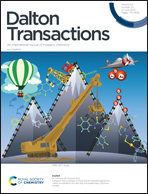Activation of the N2 molecule by means of low-valence complexes of calcium and magnesium†
Abstract
Nitrogen gas is a highly inert molecule and its activation under mild conditions represents a crucial goal in current research. In a recent study, the discovery of low-valence Ca(I) compounds capable of coordinating and reducing N2 was reported [B. Rösch, T. X. Gentner, J. Langer, C. Färber, J. Eyselein, L. Zhao, C. Ding, G. Frenking and S. Harder, Science, 2021, 371, 1125]. The study of low-valence alkaline earth complexes represents a new horizon in inorganic chemistry and demonstrates examples of spectacular reactivity. For example, complexes of the [BDI]2Mg2 type are selective reducing reagents in both organic and inorganic synthesis reactions. To date, however, no activity of Mg(I) complexes in the activation of the nitrogen molecule has been reported. By computational studies, in the present work, we investigated the analogies and differences of low-valence Ca(I) and Mg(I) complexes in the coordination, activation and protonation of N2. We have shown that the possibility of alkaline earth metals to employ atomic orbitals of the d type is reflected in the differences in the N2 binding energy and its coordination mode (end-on vs. side-on), as well as in the spin state of the resulting adduct (singlet vs. triplet). These divergences are finally observed in the subsequent protonation reaction, which turned out to be prohibitive in the presence of Mg.



 Please wait while we load your content...
Please wait while we load your content...